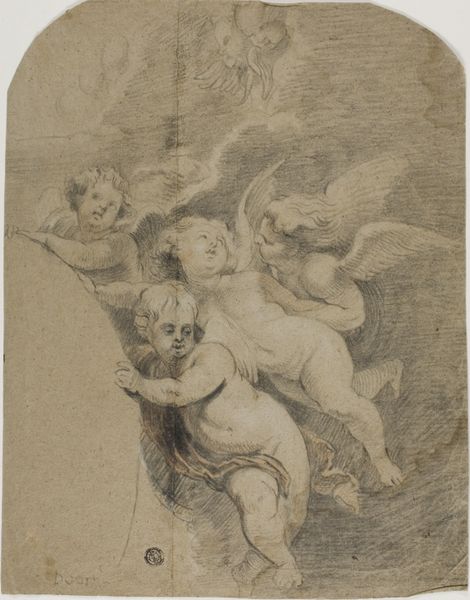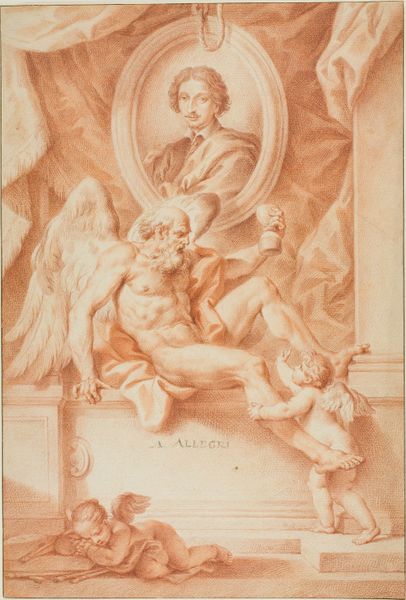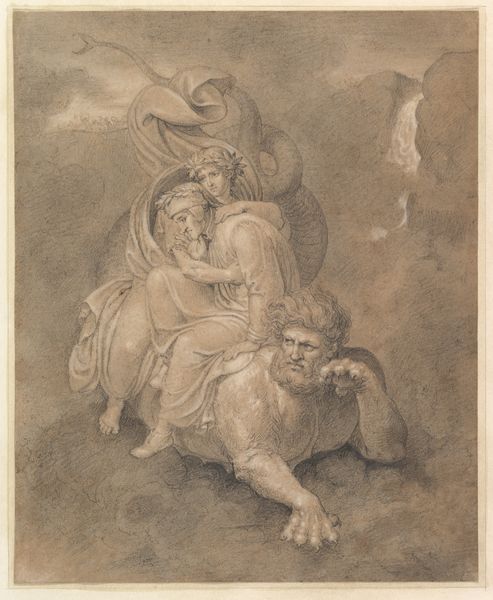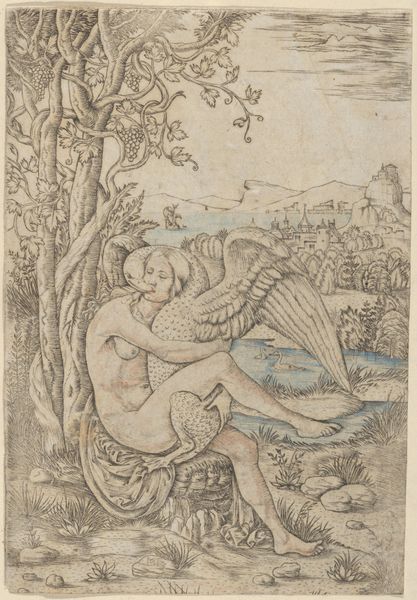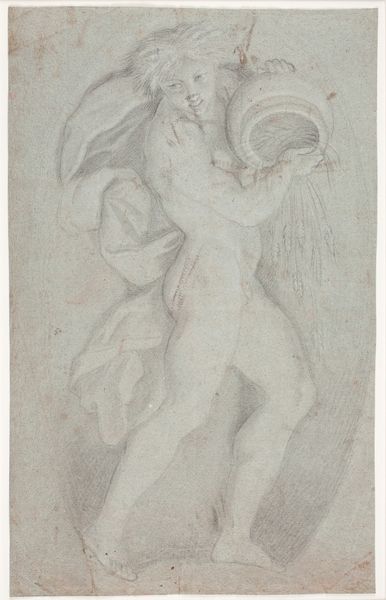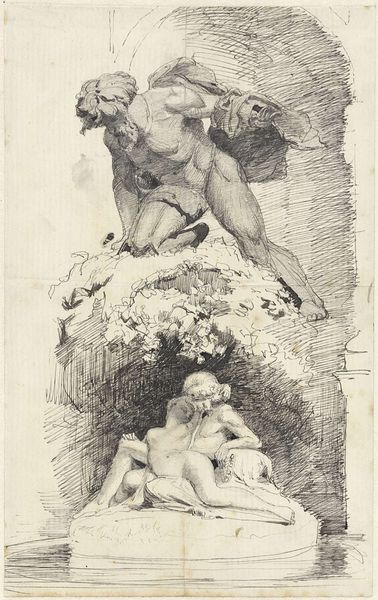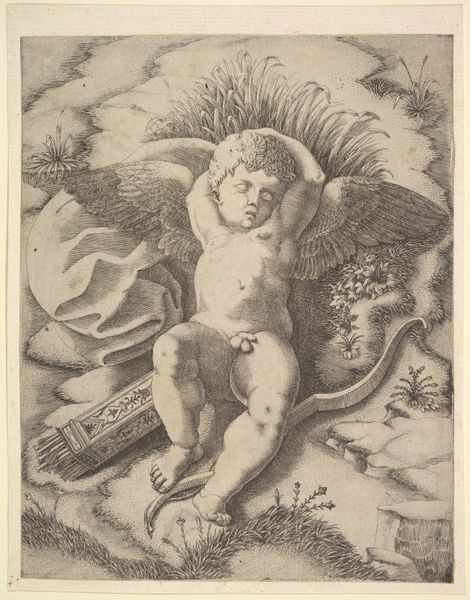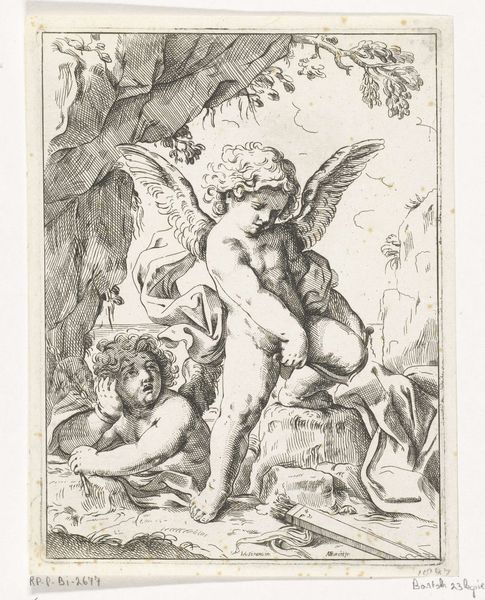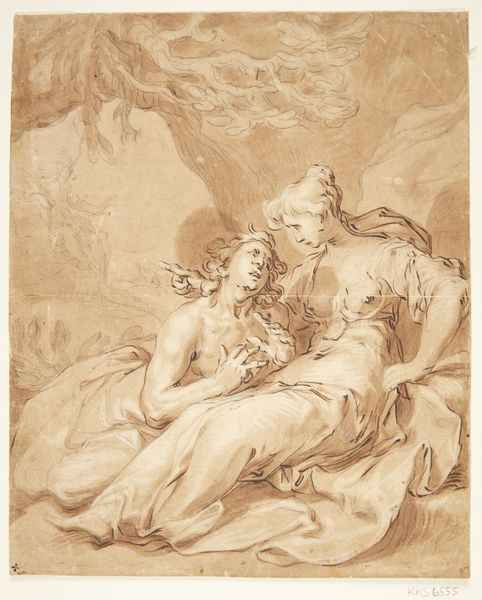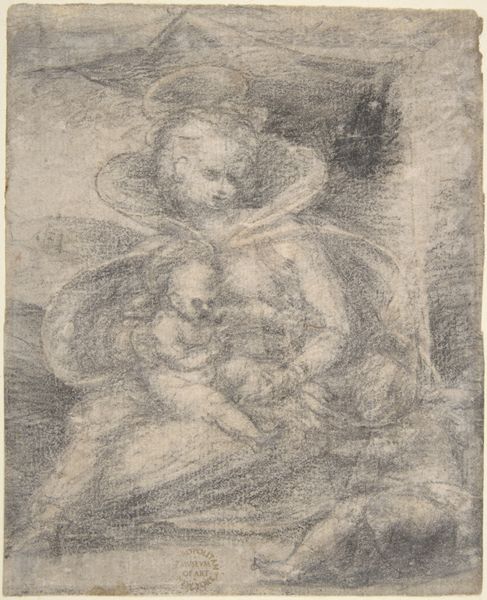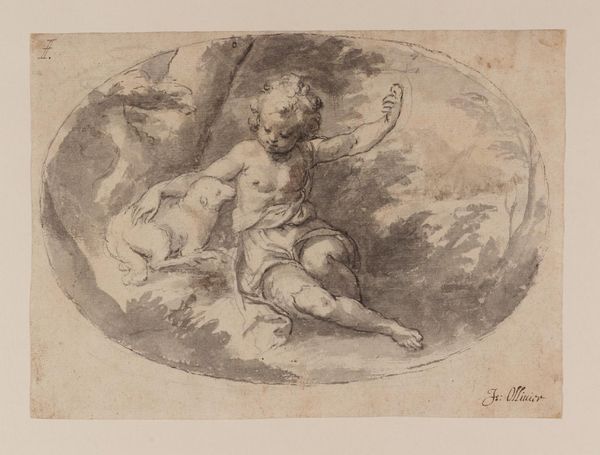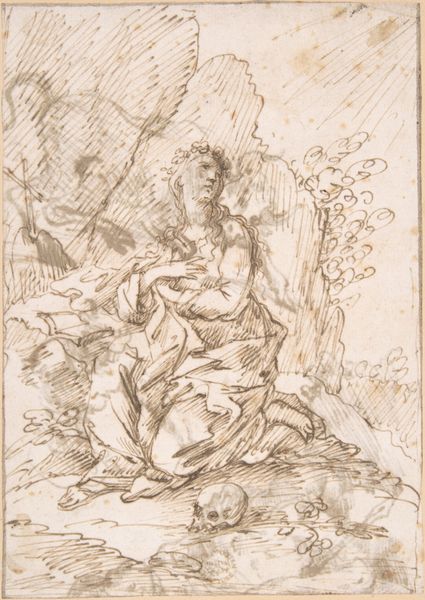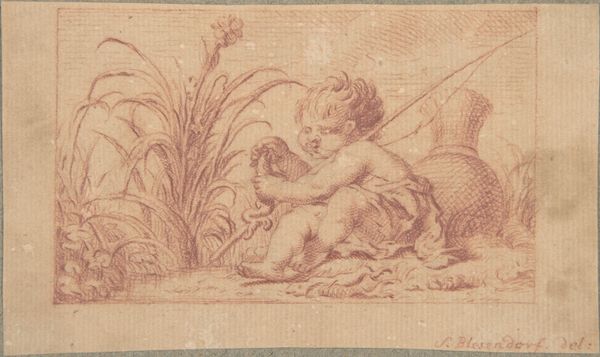
drawing, print, paper, graphite, charcoal
#
drawing
#
allegory
# print
#
landscape
#
classical-realism
#
charcoal drawing
#
figuration
#
paper
#
11_renaissance
#
oil painting
#
graphite
#
charcoal
Dimensions: 158 × 129 mm
Copyright: Public Domain
Bartolomeo Schedoni rendered this drawing, "Cupid in a Landscape," using pen and brown ink with gray wash, somewhere between the late 16th and early 17th centuries. Observe how the cherubic figure of Cupid, the Roman god of love, is not merely a symbol of affection, but a potent embodiment of primal human desires. His presence, embedded in the pastoral scene, evokes the complex interplay between nature and emotion. The Panpipes above are an ancient symbol, also known as a syrinx, these pipes represent rustic music. Consider how Cupid has metamorphosed through time. Initially, a powerful deity in classical antiquity, he has been reinterpreted in various forms. In some Renaissance depictions, he is a mischievous child, but here, Schedoni depicts the god in contemplation. This introspective Cupid engages our subconscious, stirring ancient memories of love and desire, a cycle that perpetually resurfaces.
Comments
No comments
Be the first to comment and join the conversation on the ultimate creative platform.
